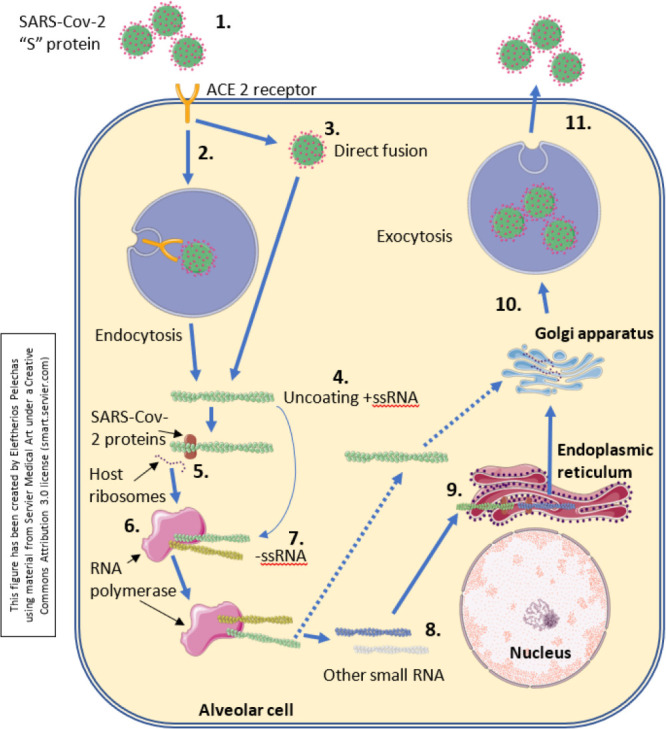Figure 1.

Invasion and replication of the SARS-CoV-2 within an alveolar cell.
The virus targets and binds onto ACE 2 receptors on the surface of type 2 alveolar cells via its surface protein “spikes”.1 ACE 2 is needed for virus to gain entry inside the cell. This is a representation of the corona virus life cycle within the cell. Corona viruses will enter via endocytosis2 or direct fusion of the viral envelope with the host membrane.3 Once inside, the virus particle is uncoated, and its genome enters the cell cytoplasm.4 Since coronavirus has a single positive stranded RNA genome, it can directly produce its proteins and new genome in the cytoplasm by attaching to the host’s ribosomes.5 The host’s ribosomes will translate the viral RNA to make proteins that will make RNA polymerase.6 The RNA polymerase will read the positive strand of RNA of the virus again to make a negative RNA strand.7 The negative strand will be used by the RNA polymerase again to make a positive RNA strand as well other small positive RNA strands.8 These small RNA strands will be read by the host’s ribosomes again in the endoplasmic reticulum to help make the structural components of the virus.9 The endoplasmic reticulum will transfer these accessory and structural proteins into the Golgi apparatus where it will be packaged up with the positive RNA strand formed, to essentially form a new virus.10 These viruses are then released from the host cell by exocytosis through secretory vesicles.11 While the virus is self-replicating in the alveolar cells, it also damages it, and this will initiate the inflammatory response. Injured alveolar cells release interferons, cytokines as well as its intracellular components (not shown, continued in Figure 2).
